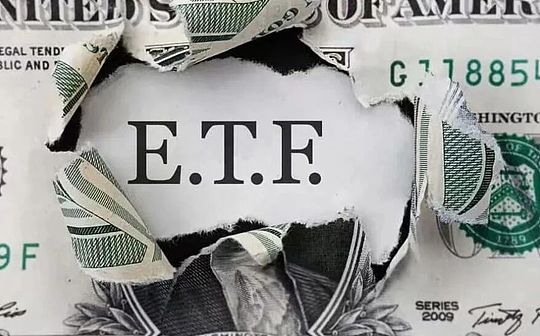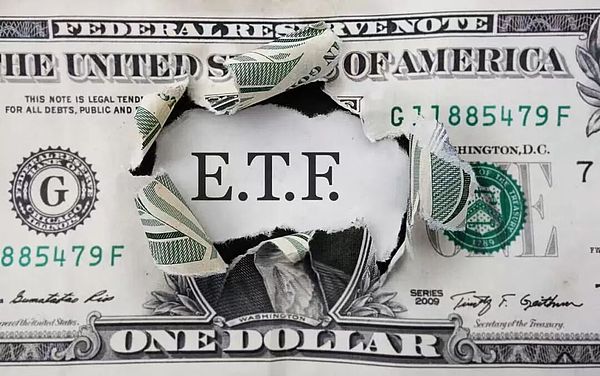
Author: Clow

It took nearly a decade for a Bitcoin ETF to be approved, and only half a year for altcoins.
In November 2025, an incredible thing happened on Wall Street.Solana, XRP, Dogecoin – these altcoins that were once regarded as “speculative toys” by mainstream finance, have collectively landed on the New York Stock Exchange and Nasdaq in just a few weeks, and transformed into regulated ETF products.
What’s even more magical is,These ETFs do not undergo strict approval by the SEC one by one, but use a new set of “universal listing standards” and a little-known “Article 8(a)” fast track, which almost automatically takes effect with the “tacit approval” of the regulatory agency.
The rules of the game are being completely rewritten.
01The “strategic abandonment” of regulation
For a long time, the SEC’s attitude towards cryptocurrency ETFs can be summarized in four words:Drag as much as you can.
Each new crypto ETF application requires the exchange to submit a rule change application. The SEC has a review period of up to 240 days and often meets the deadline with “market manipulation risk“Rejected for the reason.This kind of “Law enforcement and supervision“Let countless applications sink into silence.
But on September 17, 2025, everything suddenly changed.
The SEC approved the “Common Listing Standards” revision proposal proposed by the three major exchanges. This seemingly technical adjustment actually opened the door for counterfeit ETFs:Crypto-assets that meet certain conditions can be listed directly without the need for individual approvals.
The core admission requirements are simple:
-
Either,The asset has a trading history of at least 6 months in the futures market regulated by the CFTC, and the exchange has signed a monitoring agreement with the market;
-
Either,There are already precedents in the market for ETFs holding at least 40% exposure to this asset.
As long as one of these conditions is met, the altcoin ETF can take the “fast track.”Solana, XRP, Dogecoin all happen to fit the criteria.
Even more radically, publishers have found another “accelerator” – 8(a).
Traditional ETF applications will include“Delayed Revision”clause, allowing the SEC to review indefinitely.However, in the fourth quarter of 2025, publishers such as Bitwise and Franklin Templeton began to remove this clause from their applications.
Pursuant to Section 8(a) of the Securities Act of 1933, if a registration statement does not contain delayed effectiveness language, the document will automatically become effective 20 days after filing, unless the SEC initiates a cease and desist order.
This is like giving the SEC a multiple-choice question:Either find a good reason to stop within 20 days, or watch the product automatically go online.
Due to staff shortages caused by the government shutdown and the pressure of judicial decisions such as the Ripple case and the Grayscale case, the SEC is almost unable to cope with the hundreds of backlogged applications.More importantly, on January 20, 2025, SEC Chairman Gary Gensler resigned, and the entire regulatory agency entered a “lame duck” state.
Publishers seized this once-in-a-lifetime window and made a mad dash.
02Solana ETF: A bold attempt at staking returns
Solana relies on the technical halo of high-performance public chains to become the third ETF-based “blue-chip” asset after BTC and ETH.
As of November 2025, 6 Solana ETFs have been listed, including Bitwise’s BSOL, Grayscale’s GSOL, VanEck’s VSOL, etc.Among them, Bitwise’s BSOL is the most radical—it not only provides SOL price exposure, but also attempts to distribute on-chain returns to investors through a staking mechanism.
This is a bold attempt.The SEC has long regarded staking services as securities issuances, but Bitwise clearly marked “Staking ETF” in the S-1 document in an attempt to design a compliance structure to distribute staking proceeds.If successful, this would allow the Solana ETF to not only capture price increases but also provide “dividend”-like cash flows that would be far more attractive than a non-yielding Bitcoin ETF.
Another point of contention is that Solana does not have futures contracts on CME.According to the SEC’s historical logic, this should have been a reason for rejection.But the regulatory authorities’ final approval may mean that they recognize that the long-term trading history of regulated exchanges such as Coinbase is sufficient to form effective price discovery.
The market performance is equally impressive.
According to SoSoValue data,The Solana ETF has recorded net inflows for 20 consecutive days since its launch, with a cumulative inflow of $568 million.While the Bitcoin and Ethereum ETFs faced massive net outflows in November, the Solana ETF bucked the trend and attracted money.As of the end of November, the total assets under management of the six Solana funds wereIt has reached US$843 million, accounting for approximately 1.09% of SOL’s market value..
This shows that institutional funds are rotating assets, withdrawing from crowded Bitcoin trading, and looking for emerging assets with higher beta and growth potential.
03XRP ETF: Revaluation after regulatory settlement
XRP’s path to ETFization has been blocked by the legal dispute between Ripple Labs and the SEC.After the two parties reached a settlement in August 2025, the Sword of Damocles on XRP finally fell, and ETF applications exploded.
As of November, 5 XRP ETFs have been listed or will soon be listed:
-
Bitwise’s XRP ETF launched on November 20, directly using “XRP” as the trading symbol, this bold marketing strategy caused controversy – some people thought it was a genius move, allowing retail investors to locate it directly when searching; others criticized it for confusing underlying assets and derivative funds.
-
Canary’s XRPC was first listed on November 13,A record inflow of US$243 million was recorded on the first day.
-
Grayscale’s GXRP launches on November 24th,Converted from a trust, eliminating the issue of discounts and premiums.
Despite strong initial inflows, XRP prices came under short-term pressure following the ETF’s listing.Within a few days after the listing of Bitwise ETF, the price of XRP fell by about 7.6%, once falling by more than 18%.
This is a typical “buy expectations, sell facts” behavior.Speculative funds bought in advance when expectations for ETF approval were formed and took profits after the news came out.Macro factors, such as weaker interest rate cut expectations due to strong employment data, also suppressed overall risk asset performance.
But in the long term, the ETF has introduced continued passive buying for XRP.Data shows that the cumulative net inflow of XRP ETF since its launch has exceeded US$587 million.Speculators are retreating, but allocation institutional funds are entering the market, building a higher long-term bottom for XRP prices.
04Dogecoin ETF: From Meme to Asset Class
The ETFization of Dogecoin marks an important turning point:Wall Street began to accept “Meme coins” based on community consensus and network effects as legitimate investment targets.
There are currently three Dogecoin related products:
-
Grayscale’s GDOG launches on November 24;
-
Bitwise’s BWOW has submitted an 8(a) application and is waiting for it to automatically take effect;
-
21Shares’ TXXD is a 2x leveraged product aimed at investors with high risk appetite.
The market response was relatively lukewarm.The trading volume of GDOG on the first day was only US$1.41 million, with no net inflow recorded..This may stem from the highly retail nature of Dogecoin’s investor base—they prefer to hold tokens directly on exchanges rather than pay management fees through ETFs.
However, the market generally expects that Bitwise’s BWOW can activate institutional demand in this sector with lower fees and stronger marketing capabilities.
05The Next Wave: Litecoin, HBAR, and BNB
Outside of the three most popular altcoins,Litecoin, Hedera (HBAR) and BNB are also actively pursuing ETFization.
As a code fork of Bitcoin, Litecoin is closest to BTC in terms of regulatory attributes and is considered a commodity.Canary Capital submitted an application in October 2024 and submitted Form 8-A (the final step for exchange registration) on October 27, 2025, suggesting that the LTC ETF listing is imminent.
HBAR ETF filings led by Canary, followed by Grayscale.The key breakthrough is that Coinbase Derivatives launched the CFTC-regulated HBAR futures contract in February 2025, providing the necessary regulatory market basis for HBAR to meet the “Universal Listing Standards.”Nasdaq has submitted 19b-4 documents for Grayscale, indicating that HBAR is likely to become the next approved asset.
BNB is the most challenging attempt.VanEck submitted VBNB’s S-1 application, but given BNB’s close ties with the Binance exchange and Binance’s previous complicated entanglements with U.S. regulators, the BNB ETF is considered the ultimate test of the SEC’s new leadership’s regulatory standards.
06The “Crypto Multiplier” Effect: The Double-Edged Sword of Liquidity
The launch of altcoin ETFs not only increases investment codes, but also changes the entire market through structural capital flows.
Bank for International Settlements (BIS) research proposes“crypto multiplier” (Crypto Multiplier)concept:Cryptoasset market caps respond non-linearly to inflows.For altcoins, which are far less liquid than Bitcoin, institutional funds brought by ETFs can have a huge price impact.
According to Kaiko data, the recent 1% market depth of Bitcoin is about $535 million, while the market depth of most altcoins is only a few tenths of that.This means that an inflow of the same size (such as the Bitwise XRP ETF’s $105 million on its first day) should theoretically have a much larger boost to the price of XRP than to BTC.
The current phenomenon of “selling the facts” masks this effect.Market makers need to buy spot stocks in the early stages of ETF subscription, but if the overall market sentiment is bearish, they may use the futures market to hedge by shorting, or digest inventory in the over-the-counter market to suppress the rise in spot prices in the short term.
However, as the size of ETF assets accumulates, this passive buying will gradually drain the exchange’s liquidity, causing future price fluctuations to become more violent and tend to rise.
07Market stratification: a new valuation system
ETF launch exacerbates liquidity stratification in crypto markets:
The first tier (ETF assets):BTC, ETH, SOL, XRP, DOGE.These assets have compliant fiat currency entrances and can be allocated by registered investment advisors (RIAs) and pension funds without any barriers.They will enjoy a “compliance premium” and lower liquidity risk.
Second tier (non-ETF assets):Other Layer 1 and DeFi tokens.Due to the lack of ETF channels, these assets will continue to rely on retail funds and on-chain liquidity. Their correlation with mainstream assets may be reduced and they face the risk of being marginalized.
This differentiation will reshape the valuation logic of the entire crypto market, shifting from speculation-driven to multi-polar valuation based on compliance channels and institutional allocations.
08Summary
The wave of altcoin ETFs at the end of 2025 marks a decisive step for crypto assets from “marginal speculation” to “mainstream allocation”.
By cleverly utilizing the “Common Listing Standards” and “Section 8(a)”, issuers successfully broke through the SEC’s line of defense, bringing once-controversial assets such as Solana, XRP, and Dogecoin to regulated exchanges.
This not only provides access to compliant funds for these assets, but more importantly, de facto confirmation of the “non-security” attributes of these assets at the legal level.
Despite short-term profit-taking pressure, as institutional investors begin to allocate 1%-5% positions to these assets in their models,Structural capital inflows will inevitably drive up the valuations of these “digital commodities”.
In the next 6-12 months, we will see more assets (such as Avalanche, Chainlink) try to copy this path.
In a multi-polar crypto market,ETFs will be the differentiator“Core assets” and “peripheral assets”the most important watershed.
For investors, this change brings not only investment opportunities, but also a complete reconstruction of the market structure:A market that was once driven by speculation and narrative is evolving towards a new order anchored by compliance channels and institutional configurations.
This process is irreversible.





